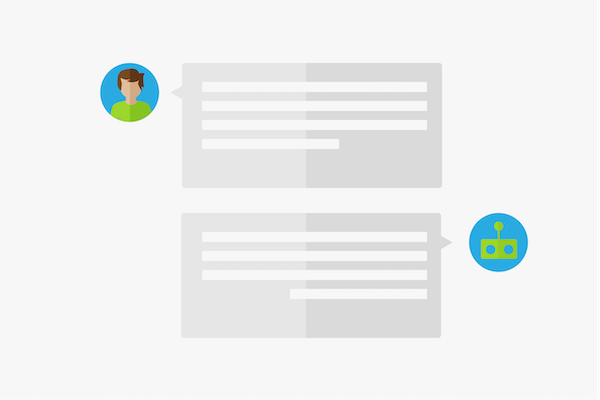Chatbot
Chatbots are computer programs that can interact with people in an almost natural way via social media or chat programs. Their functionality is based on artificial intelligence and proprietary algorithms, or they use ready-made question-answer patterns. Chatbots are an integral part of human-machine interaction.
General information
The idea that computers interact with people has been around for many decades. The Turing test at the end of the 1950s, for example, demonstrated a way of distinguishing between human communication and computer-controlled communication. In the mid-1960s, "Eliza", the world's first chat messenger, was created. Eliza became a computer-controlled psychotherapist, presumably in the style of Eliza Doolittle from George Bernard Shaw's "Pygmalion".
With the emergence of the first chat programs such as ICQ at the end of the 1990s, chatting with the emerging Internet became increasingly popular. So-called chatbots or chatterbots were also used. Their task was to draw the user's attention to the "chatiquette", rules for chatting, when visiting a chat room. In addition, some of these chatbots were able to provide answers to simple questions. These were fixed patterns. Serious communication was not possible in this way.
Around 2010, Facebook (and later Whatsapp and other messengers) came onto the market, and chat programs receded into the background. However, chat programs then made a comeback as part of marketing measures. With artificial intelligence, new algorithms, big data and other technology, the new chatbots became more intelligent and, when combined with language assistants such as Siri (Apple) or Alexa (Amazon), chatbots became real digital assistants. The same applies to systems such as Google Home or Microsoft's Cortana.
How chatbots work
The first chatbots were based on very simple rules. A database was created for the bots that contained questions and answers. If the bot was asked a question, it would break the question down into its individual parts in order to grasp the meaning and then deliver the appropriate answer. Very simple chatbot functions would be, for example, answering a question about the time of day, or about the conversion of currencies. In a certain sense, Google does this with a majority of the answers in the Answer box.
Modern chatbots rely both on a very large amount of data, and on what they learn from user requests. These self-learning systems are very similar to artificial intelligence.
Criticism
According to a survey, 1 in 4 users in Germany could imagine communicating with a chatbot. However, these communication robots are not yet accepted in all parts of the population. Many people are particularly sceptical about data protection and privacy when it comes to digital assistants as a further development of chatbots. Google did not have to admit a mistake until October 2017, for example, because the new Google Home Mini, which was delivered in October 2017, listened to all conversations and did not only switch on when a command was given. Similar criticism has already been levelled at Amazon's Alexa.
Chatbots also came under fire when they were obviously used in the US election campaign to massively influence public opinion. Even if this is more about the variant of the so-called "social bots", reports about robot journalists or election-campaigning chatbots tend to cause negative hit times.
Significance for Social Media Marketing
Chatbots offer companies a wide range of options. For example, the bots can be used for customer relationship management. The bots can interact with customers via social networks or their own website and answer questions about products or orders.
Chatbots can also be used to publish automated messages about one's own products or the company in social networks. In addition, intelligent bots can be used to better analyze communication with customers.

